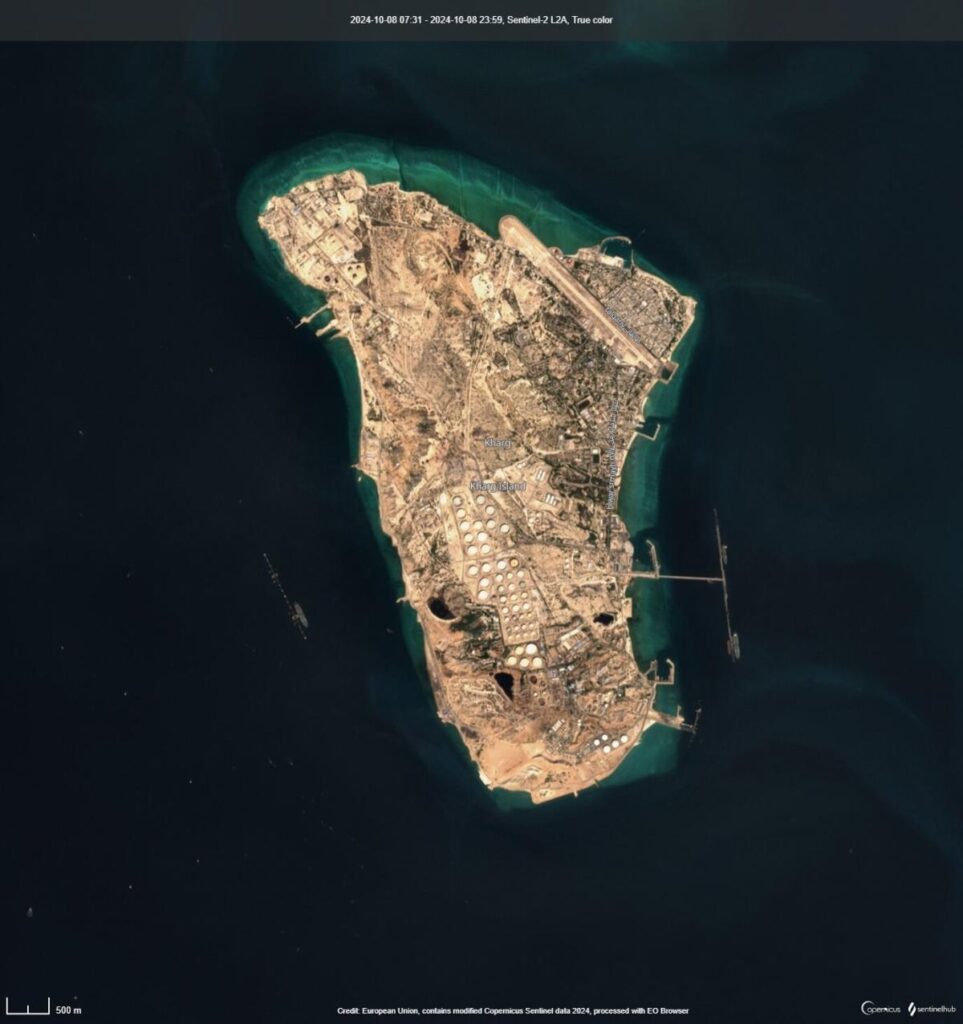Iran continues to maintain its crude oil exports from the Kharg Island terminal, despite recent escalated tensions prompting a flotilla of tankers to abandon the area. Following threats of retaliation from Israel against Iranian missile activities, three tankers—two very large crude carriers (VLCC) and one Aframax—were observed at the jetties surrounding the island, with the capacity to transport approximately 5 million barrels of crude oil. Satellite imagery indicates that the anchorage previously occupied by numerous tankers has largely emptied, as vessels have dispersed to evade the potential threat, raising concerns about Iran’s ability to sustain its oil export activities amid geopolitical pressures.
The situation remains complex, particularly considering President Joe Biden’s diplomatic efforts to avert military action by Israel against Iranian oil installations. The escalation of hostilities has resulted in an uptick in crude prices, with Brent crude surpassing $80 a barrel for the first time since August. This price surge has heightened the stakes for all involved parties, as higher oil prices can significantly impact global markets and economies, making the preservation of stability in oil trade crucial. The Biden administration’s stance reflects an intention to stabilize the situation and protect interests not only in the U.S. but also among allied nations.
Amid these tensions, preliminary reports suggest that Iran’s crude exports have reached notable levels, with some estimates indicating the highest volumes in over 15 months. In September, initial figures revealed an export rate of approximately 1.73 million barrels per day—a statistic that analysts believe may increase as more vessels become detectable through tracking technologies. This trend underscores Iran’s resilience in the face of sanctions and regional threats, as the nation capitalizes on its oil infrastructure to continue revenue streams that are vital to its economy.
The dynamics surrounding Iran’s oil exports emphasize the broader implications for global oil supply and geopolitical stability. Iran’s strategic positioning in the oil market means that any significant disruption in its export activities could reverberate throughout international markets, affecting prices and supply chains. Additionally, as the situation unfolds, it highlights the intricate balance that Biden’s administration seeks to maintain between supporting allies and avoiding further conflict in the region, especially given the interconnected nature of politics and economics in the Middle East.
In the larger context of energy markets, the ongoing events illuminate the pressing need for vigilance among stakeholders concerning market reactions and supply stability. Oil prices are particularly sensitive to geopolitical developments, and the impacts of fluctuating supplies can challenge energy security for many countries reliant on stable imports. The volatile climate in the region necessitates a robust response from global markets, as uncertainties around Iran’s oil capabilities continue to give rise to fluctuations in pricing and availability.
As the situation develops, the potential for continued Iranian oil exports remains a critical factor in shaping oil supply trends and pricing structures globally. The Iranian government’s ability to navigate sanctions, military threats, and domestic challenges will influence oil export levels and the national economy. As such, analysts and traders alike will closely monitor the region’s developments, seeking insights into how these geopolitical tensions may further affect the global oil landscape and contribute to future pricing dynamics.

